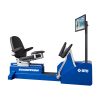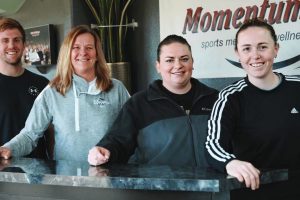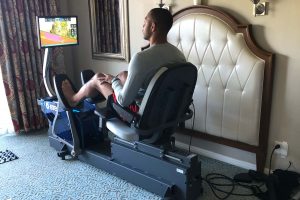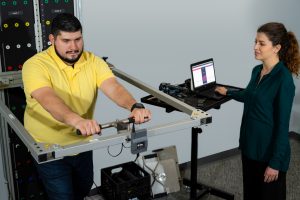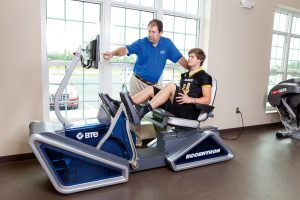
New EMG Research Shows 4x Eccentric Muscle Activation with BTE Eccentron
Clinical ResearchThe Eccentron produced muscle activation almost four times higher than the other exercises for all muscle groups tested. With the Eccentron, participants achieved an average muscle activation of 60% of their maximum.
Eccentric therapy with the BTE Eccentron yields four-times-higher muscle activation than regular eccentric exercise, according to a new study by Jerrold Petrofsky and Robert Donatelli.
Today, many insurance companies limit the billable time allowed for therapeutic exercise. Physical Therapists, Occupational Therapists, and Athletic Trainers must therefore treat injuries effectively in limited time with their clients. Add that to patients’ desire to see results quickly, and you’ve got a treatment environment that demands efficiency.
In light of this, a group of researchers from Touro University in Nevada and State University of New York wanted to find a way to make eccentric exercise more efficient. So they decided to evaluate the Eccentron – an eccentric-only, closed-chain resistance training system that allows light or heavy muscle loading with minimal energy output from the injured user. Given this, the researchers suspected that Eccentron users may be able to achieve better clinical outcomes, more efficiently.
Study Design: EMG Data From Eccentron vs Other Eccentrics
The study compares muscle activation of the quadriceps, gastrocnemius, hip adductors, and hamstring during eccentric exercises. These exercises include toe raise, stability ball leg curl, side lift, decline board leg extension, and use of the BTE Eccentron closed kinetic chain eccentric resistance strength trainer.
The researchers used surface electromyography (EMG) to measure muscle activation during the exercise sessions.
Eccentric vs Concentric
Eccentric exercise is ideal for people recovering from injuries looking for highly efficient and effective rehab. It allows higher resistance capacity and lower energy output from the patient. It also increases neuromuscular control, which can help prevent falls in the elderly.
Several research studies show the benefits of eccentric exercise for rehab and training. For quick summaries of these studies, check out our e-book on the power of eccentric exercise for ACL rehab and athletic performance.
Compared to concentric exercise, the body can resist 30-40% more weight eccentrically. Eccentric resistance also requires 80% less oxygen than concentric, which makes it less fatiguing for the patient.
Clinical studies suggest that eccentric exercise is safer and more effective for several types of rehabilitation. For example, eccentric exercise has proven effective for ACL reconstruction, spine injuries, total knee arthroplasty (TKA), Parkinson’s Disease, and sarcopenia prevention.
Achieving 4x Higher Muscle Activation
The researchers collected EMG data from each muscle group during each exercise. In analyzing the overall muscle activation, it became clear that one exercise far outperformed the others.
The Eccentron produced muscle activation almost four times higher than the other exercises for all muscle groups tested. With the Eccentron, participants achieved an average muscle activation of 60% of their maximum.
A major factor in the Eccentron’s muscle activation efficiency is that it activates both sides at a time, unlike the four traditional exercises studied. To use the Eccentron, participants were positioned on the system sitting with both feet on the pedals. The pedals alternate and move toward the user with variable force. As the pedal moves in, the user resists with an eccentric contraction, bending the knee to the chest. There is never a concentric or “leg press” movement. This repetition creates an eccentric-only, closed-chain movement like walking down the stairs.
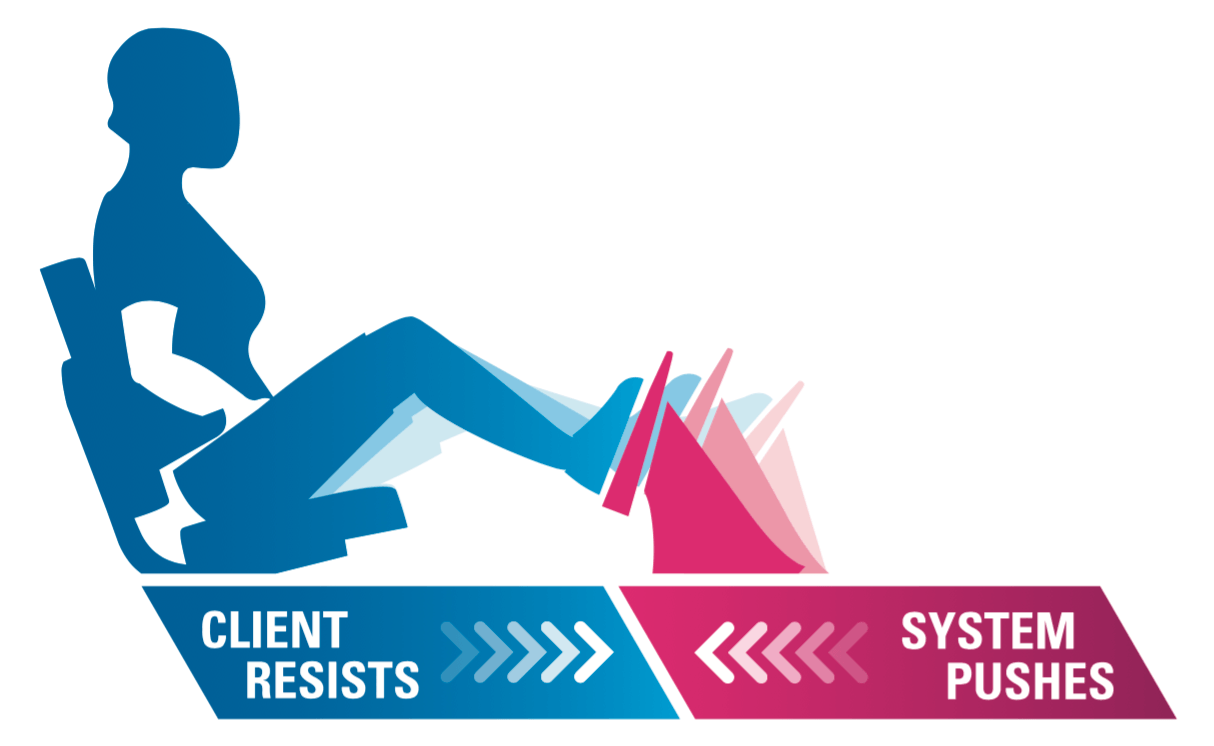
Increase Efficiency in Your Practice
What makes these results so important? One word: efficiency. In the current clinic environment, fast results and efficiency are essential. Clinicians must treat more patients in less time. Patients want to see and feel results as soon as possible.
We constantly strive to do what’s best for our clients and our business. We work to deliver the best patient outcomes, and to keep up with evolving insurance and reimbursement regulations.
In our world, the most efficient treatment with the best outcomes wins. Using the Eccentron means faster results, safer treatment, and a better experience for your patients or clients.
Evidence-based Practice
Over the years, several clinical researchers have tested eccentric exercise head-to-head against other modalities. The results speak for themselves. Eccentric exercise is safer and more effective for rehabilitation, especially for older patients.
Want more evidence-based insights on eccentrics for rehab? Check out our e-book about the power of eccentrics for ACL rehab and athletic performance.
Jeff Johnson, MA, ATC
Clinical Specialist
BTE
References
- Petrofsky J, Donatelli R, McKivigan J, Laymon M. Can eccentric exercise of the lower limb be made more efficiently, a pilot study. Sunkrist Public Health and Research Journal. Vol1:1: 1-8.
- Zazulak BT, Hewett TE, Reeves NP, Goldberg B, Cholewicki J. Deficits in neuromuscular control of the trunk predict knee injury risk: a prospective biomechanical-epidemiologic study. The American Journal of Sports Medicine. 2007; 35: 1123-1130.
- Hewett TE, Zazulak BT, Myer GD, Ford KR. A review of electromyographic activation levels, timing differences, and increased anterior cruciate ligament injury incidence in female athletes. British Journal of Sports Med. 2005; 39: 347-350.
- Lepley LK, Lepley AS, Onata JA, Grooms DR. Eccentric exercise to enhance neuromuscular control. Sports Health. 2017; 9:333-340.

